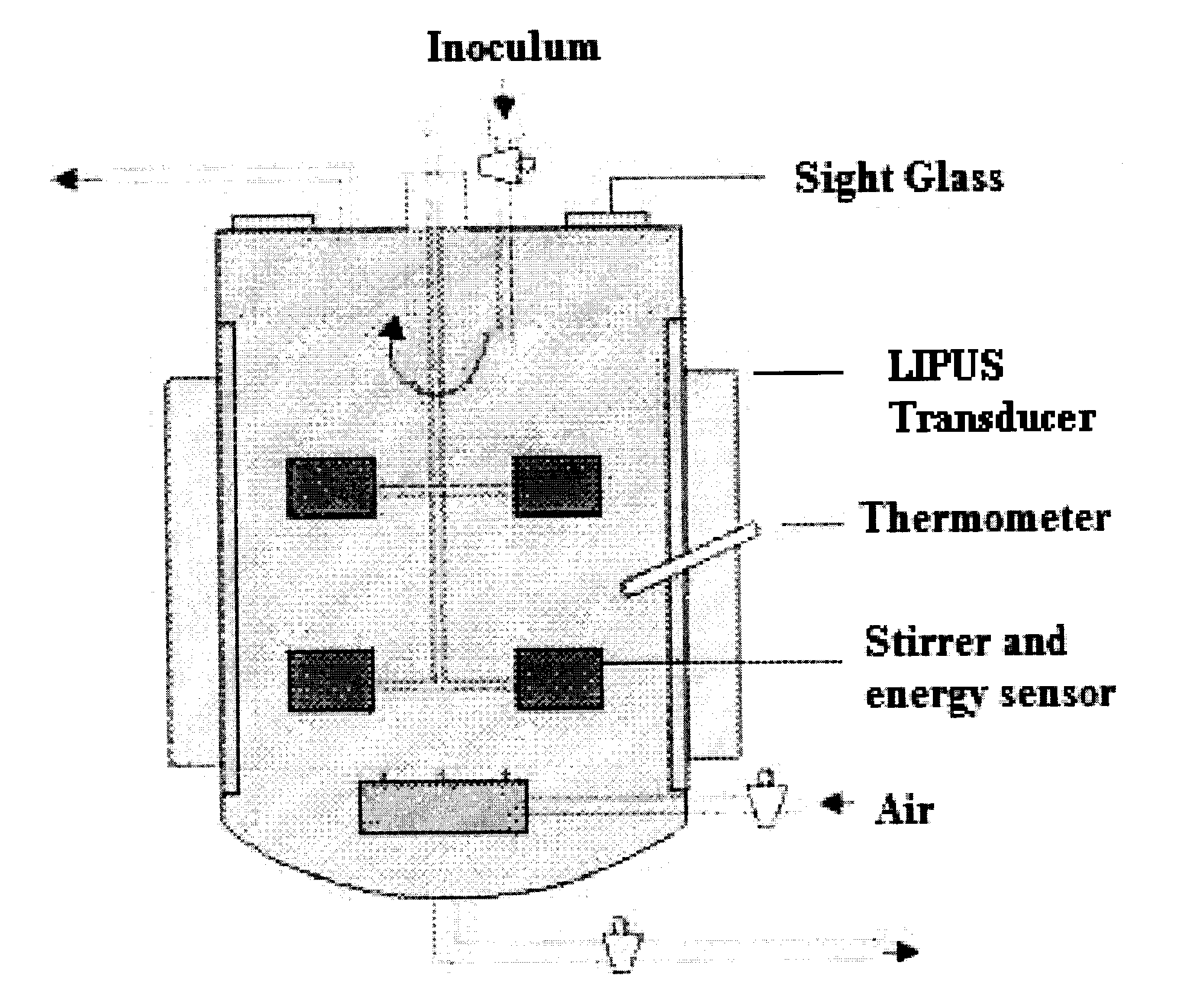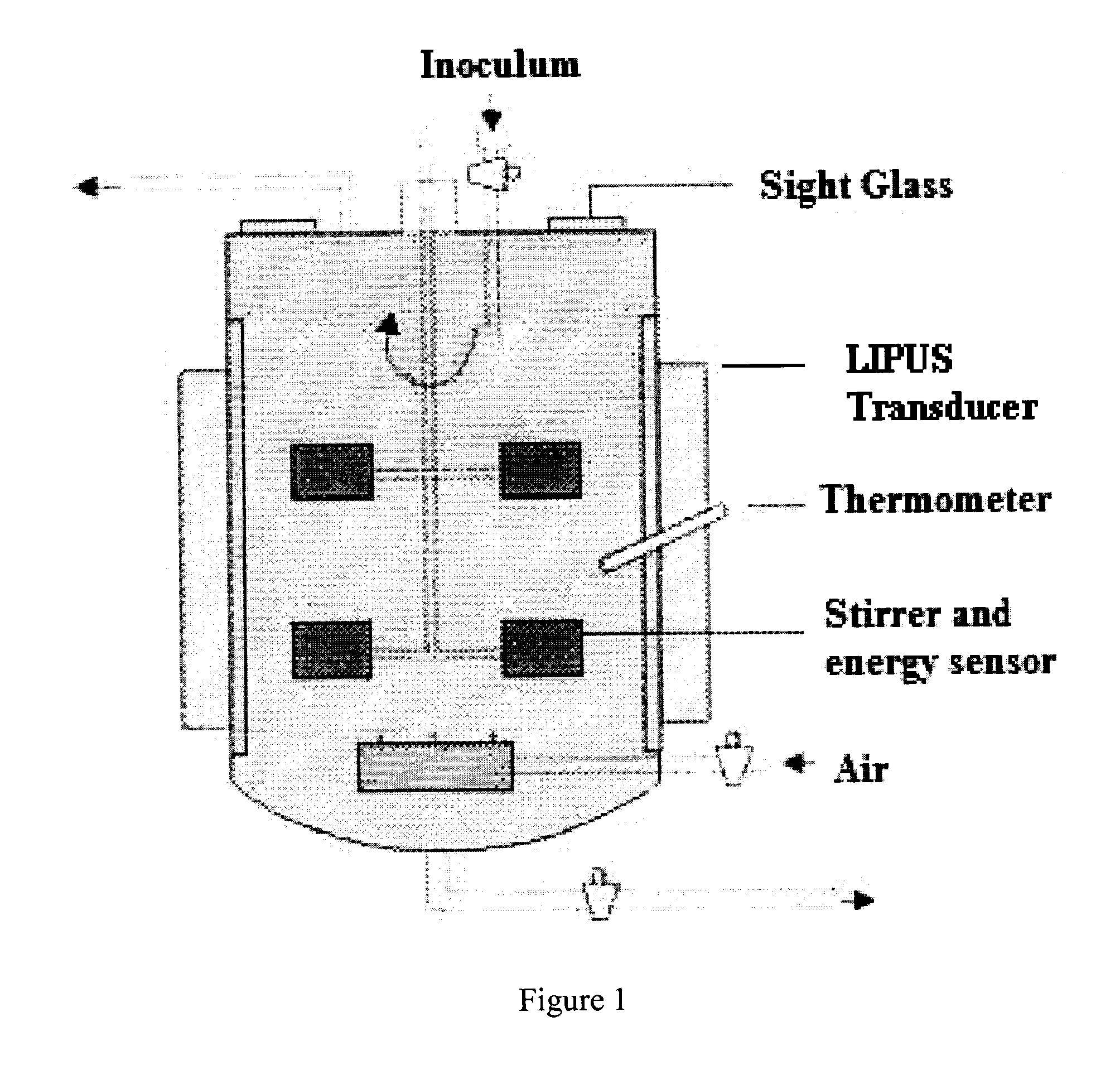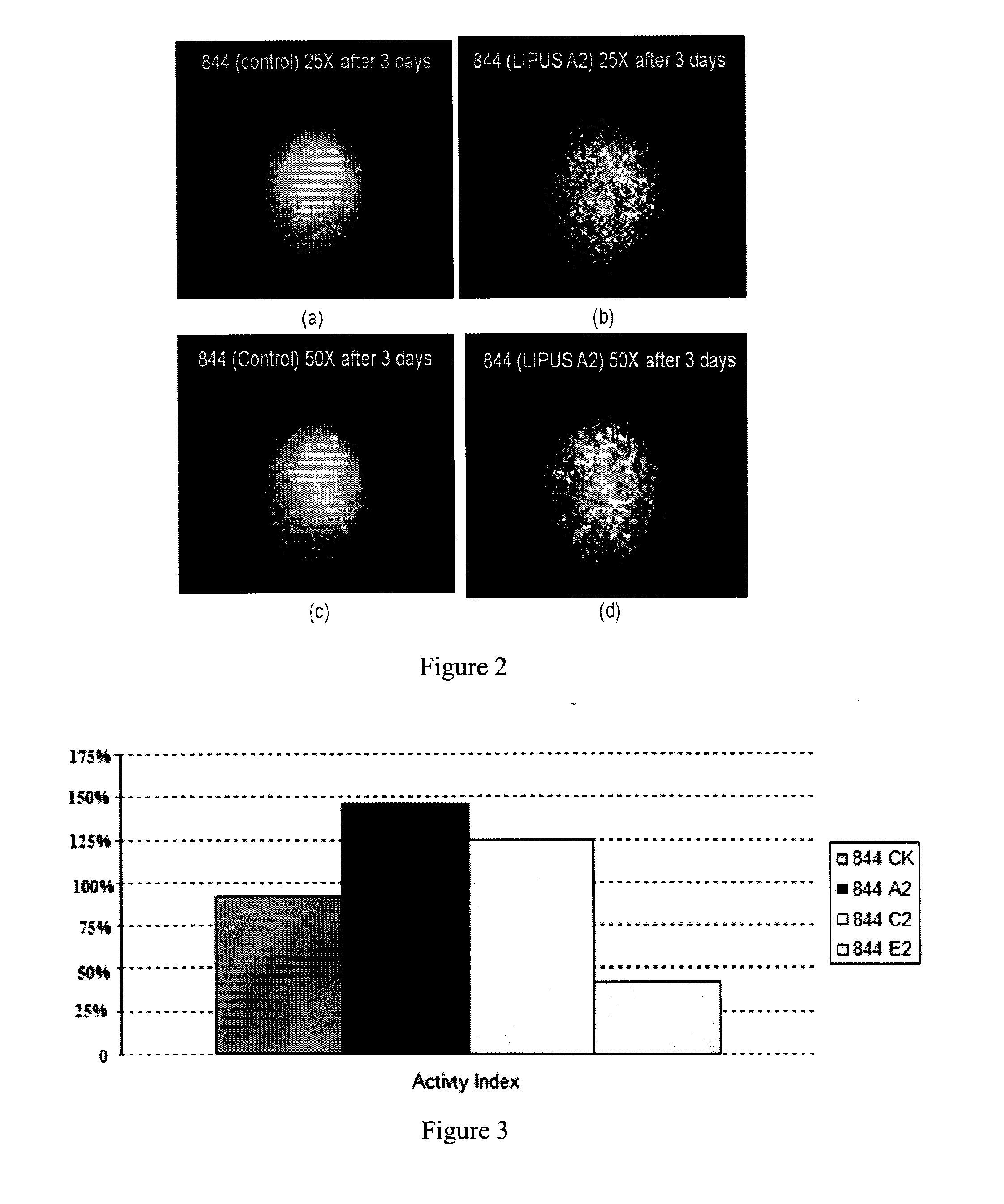Ultrasound enhanced growth of microorganisms.
a microorganism and ultrasonic technology, applied in the field of ultrasonic enhanced growth of microorganisms, can solve the problems of slow growth rate, difficult to ensure, limited rate at which the desired product is produced, etc., to enhance the rate of cell growth or protein expression, reduce the effect of temperature increase of the environment and minimizing the effect of temperature increas
- Summary
- Abstract
- Description
- Claims
- Application Information
AI Technical Summary
Benefits of technology
Problems solved by technology
Method used
Image
Examples
example 1
Growth of Penicillium brevicompactum
[0058]One vial of cryopreserved P. brevicompactum spores was diluted 1 / 20 with sterile water. 1 ml of the spore suspension was dispensed into 500 ml flask containing 75 ml of PDA agar and incubated for 9 days at room temperature. 50 ml sterile 0.01% Tween80 was added to the spore culture flask and the spores were scraped into solution. The solution was transferred to a sterile container. 200 μL of the spore suspension was inoculated into a 125 ml plastic flask with 25 ml seed medium. The seed flasks were incubated at 27° C., 200 rpm (2″ throw) for 48 hours. 0.5 ml of seed culture was inoculated into flasks containing 25 ml production medium and incubated Incubate the production flasks at 27° C., 200 rpm (2″ throw). 10 minutes of ultrasound treatment were applied to the each flask everyday with different intensities.
Seed MediumProduction MediumAmount (g / L)Amount (g / L)Sucrose52.0150.0Glycine7.514Yeast extract2.00MgSO4 7H2O1.01.0KH2PO41.01.0JEC TE s...
example 2
MPA Quantitation by HPLC
[0061]Calibration and quality control standards were prepared by dilution of MPA stock solution with acetonitrile. Calibration standards containing 0.5, 1.0, 10, 50, 100, 250, 500 μg / ml MPA were used to construct calibration curve using 1 / x2 linear regression.
[0062]HPLC was performed on an Agilent 1100 HPLC system. The analytical column was SymmetryShield RP-8 (100×4.6 mm, 3.5 μm) with a guard column (SymmetryShield 20×3.9 mm, 5 μm). Mobile phase A was 35:65% (v / v) MeOH: 5 mM NaH2PO4 (pH 4.0) and mobile phase B was 90:10% (v / v) MeOH: 2.5 mM NaH2PO4 (pH 4.0). Elution of MPA from the column was carried out with a linear gradient mobile phase at a flow rate of 1.0 ml / min from 0 to 80% B in 8 min, from 80% to 100% B in 4 min, 100% B kept for 4 min, from 100% B to 0% B in 1 min, and 0% B kept for 5 min. MPA absorbance was monitored at 215 nm wavlength.
[0063]MPA concentration from culture treated with ultrasound at D and E levels shown 6-14% increase in MPA product...
example 3
Higher Intensity Ultrasound
[0064]Certain higher level of ultrasound treatment might supress the microorganism growth. As may be seen in FIGS. 4 and 5, P. brevicompactum treated with 80 mW / cm2 showed a slight decrease in biomass and MPA production under the specific growth conditions used, whereas ultrasound at 30 and 60 mW / cm2 showed increases in biomass and MPA production.
PUM
| Property | Measurement | Unit |
|---|---|---|
| frequency | aaaaa | aaaaa |
| frequency | aaaaa | aaaaa |
| frequency | aaaaa | aaaaa |
Abstract
Description
Claims
Application Information
 Login to View More
Login to View More - R&D
- Intellectual Property
- Life Sciences
- Materials
- Tech Scout
- Unparalleled Data Quality
- Higher Quality Content
- 60% Fewer Hallucinations
Browse by: Latest US Patents, China's latest patents, Technical Efficacy Thesaurus, Application Domain, Technology Topic, Popular Technical Reports.
© 2025 PatSnap. All rights reserved.Legal|Privacy policy|Modern Slavery Act Transparency Statement|Sitemap|About US| Contact US: help@patsnap.com



